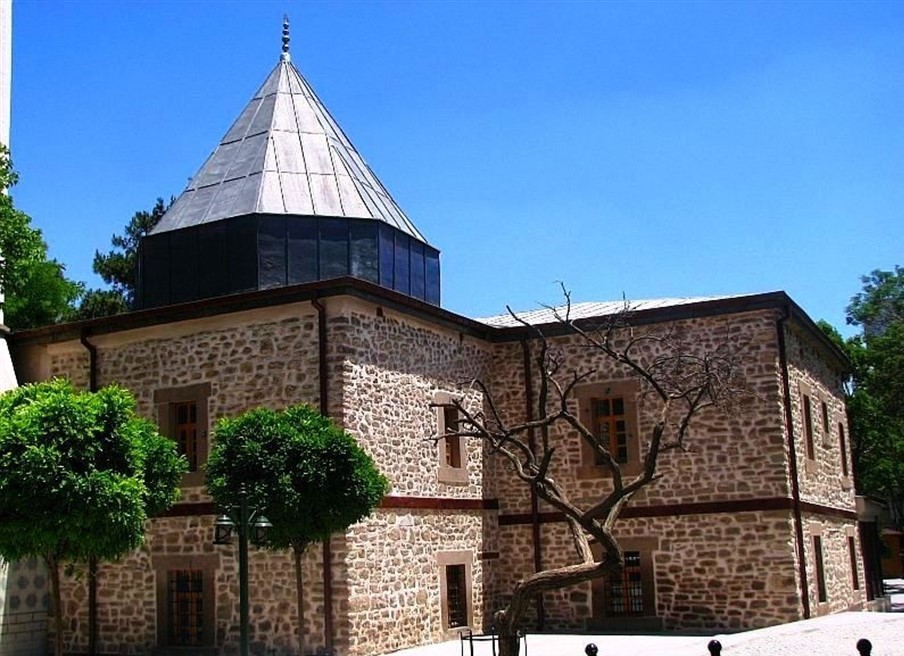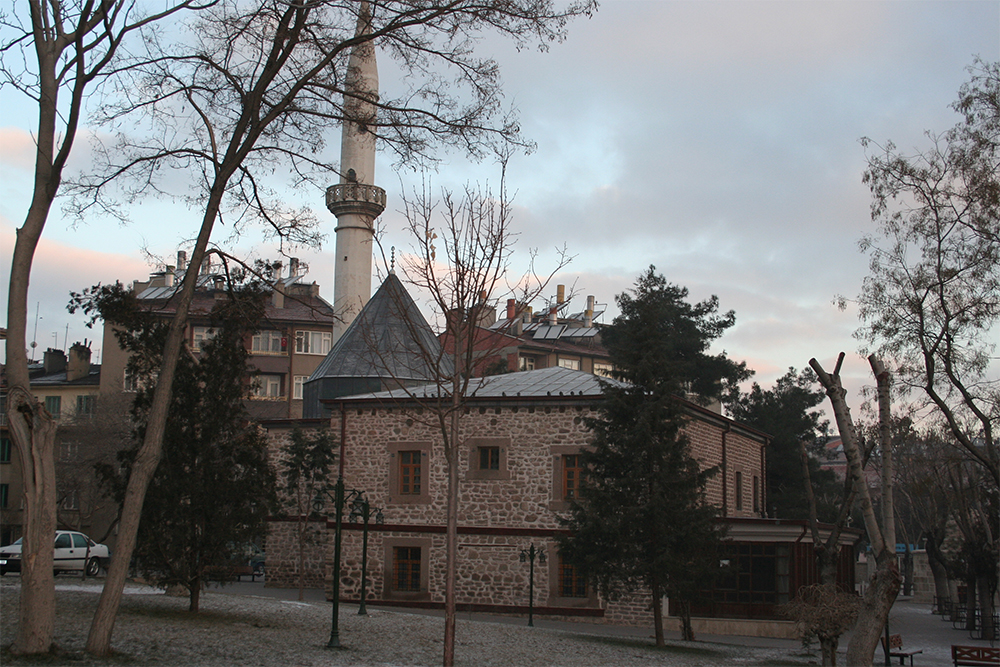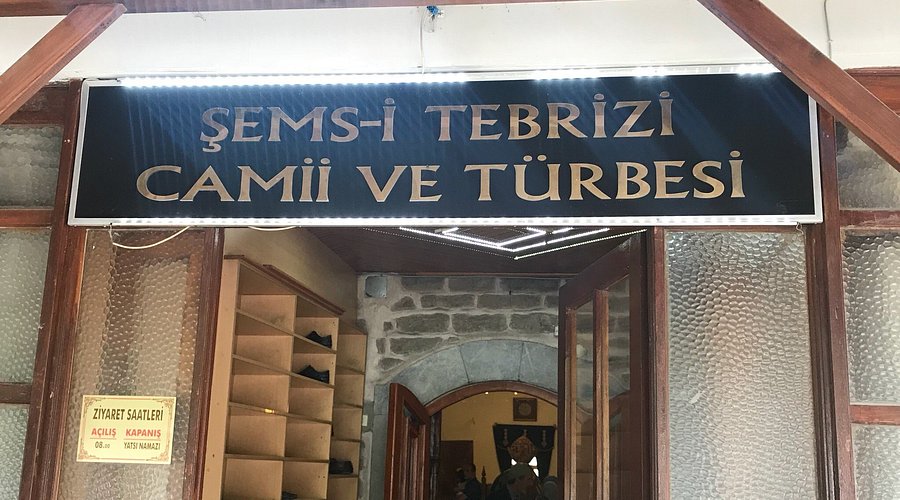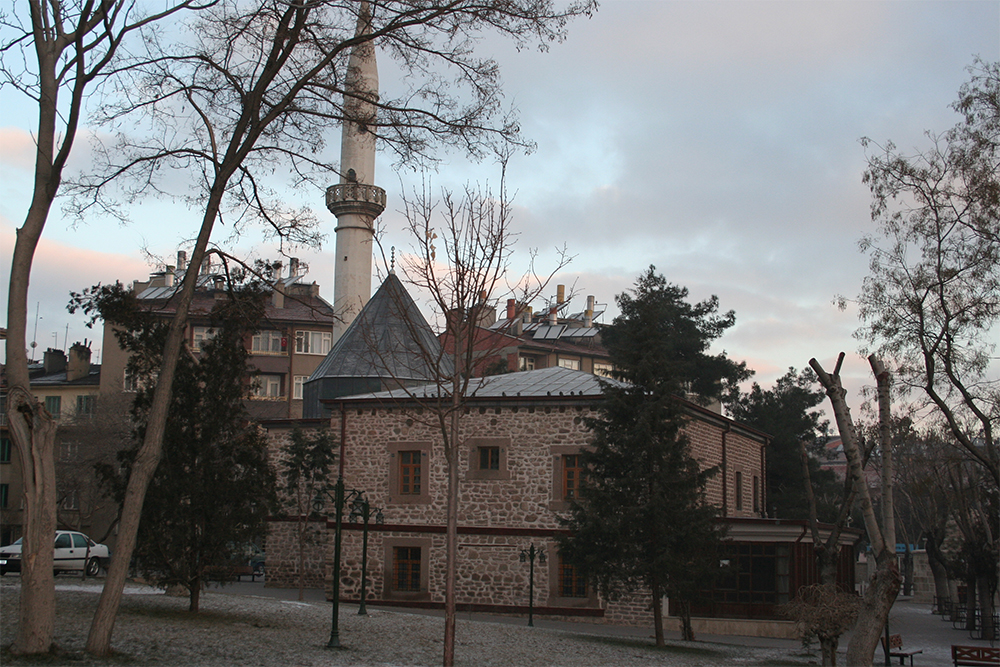When you think of Konya, the first name that comes to mind is Mevlana, isn't it? That great scholar, that timeless sage... But have you ever wondered about the secret that transformed that respected professor, that Islamic scholar with thousands of disciples, into a poet of love whose verses traveled across seven climates? The name of that secret, that divine spark, is Shams-i Tabrizi. No visit to Konya is complete without understanding the story of this great transformation. In this article, as we prepare a list of things to do at the Tomb of Shams-i Tabrizi, one of the most meaningful stops on your Konya trip, we are actually inviting you to witness the beginning of a story, the rebirth of a soul. If you're ready, let's begin this spiritual pause.
Visit the tomb of the spiritual companion who changed Mevlana's life
Try to imagine Mevlana before he met Shams. He was a scholar who had reached the pinnacle of jurisprudence and theology, giving lectures from the pulpit he inherited from his father, much like a rector or a professor today. The public and his disciples swirled around him, listening intently to his every word. But within him, there was a dormant volcano; a sea of love waiting for a spark... That spark was a wandering dervish named Shams, who arrived in Konya in 1244 in his shabby clothes.
Their meeting is known in the history of Sufism as Maraj al-Bahrayn, meaning the meeting of the two seas. According to the stories, Shams stopped Mevlana in front of the madrasa and asked him that famous question: Who is greater, the Prophet Muhammad or Bayazid Bastami? Mevlana, of course, replied that the Prophet was the greatest. Shams then shook everything Mevlana knew with a counter-question: Then why did the Prophet say, 'O Lord, we have not known You as You should be known,' while Bayazid said, 'There is none but God in my robe, how exalted is my station!'?. This question was a key that unlocked the door beyond the knowledge written in books, to the knowledge of hal, or lived spirituality. That moment was the beginning of the end for Mevlana; the old Mevlana was dying, and the Mevlana in love was being born.
After this meeting, Mevlana embarked on the journey he summarized as I was raw, I was cooked, I was burned, under the guidance of Shams. Shams advised him to leave his books, his lessons, his position, and his fame. He invited him to cleanse himself of the self, to abandon everything he had and dive into the ocean of divine love. This was not well-received by Mevlana's circle. His disciples and even his family were jealous of Shams, seeing him as a sorcerer who had stolen their master from them. Due to this increasing pressure and hatred, Shams suddenly left Konya one night.
This separation was the fire of longing that made Mevlana a poet. Burning with the yearning for his friend, Mevlana began to write the Masnavi, a work of 25,000 couplets considered among the most magnificent poems in the world. The absence of Shams had become as instructive as his presence. The tomb you visit today is a monument to this great friendship, this divine love, and this painful transformation. Although it is a mystery whether Shams is truly buried here or if his grave is in Multan, Pakistan , this is undoubtedly his spiritual station. To feel the spirit that permeates this land is the first and most important step to understanding Mevlana.

Pray in the peaceful atmosphere of the mosque next to the tomb
As you step away from the depth of Shams's story and into the area of the tomb, a sense of peace greets you, distancing you from the city's chaos. Located within the greenery of Shams Park, the tomb and mosque are an oasis of tranquility. Even the architecture of the building reflects Shams's philosophy; it is unpretentious, simple, and profound.
Although the first structure is believed to have been built in the 13th century, the current building is largely the result of restoration and expansion work carried out in 1510 by Emir İshak Bey. Bearing the traces of classical Seljuk architecture, the tomb is covered with a conical cap made of brick, resting on an octagonal drum set on a stone body. This simplicity continues inside. Inside the tomb, you are not greeted by ornate decorations, but by a wooden sarcophagus covered with a green cloth and a turban with a sash. The geometric patterns on the ceiling and the modest hand-drawn decorations on the windows are elegant touches that do not distract from the spiritual intensity of the space.
Pay special attention to the small window on the north facade during your visit. Known among the people as the Hacet Penceresi (Window of Wishes), this window is a special spot where visitors stop to pray and whisper their wishes. It is a living example of how spirituality intertwines with folk traditions.
Spend one of the most precious moments of your visit sitting quietly inside or in the courtyard of the mosque adjacent to the tomb. Close your eyes and imagine the conversations of the two friends that echo in this space, the longing Mevlana felt, and how this longing turned into immortal verses. This is not just a place of worship, but also a point of contemplation and introspection. For those who want to feel the soul of Konya, this stop is one of the most special experiences the city offers and holds a unique place among the spiritual stops in Konya.

Spiritually complete your Mevlana Museum visit with this stop
The Mevlana Museum is at the top of everyone's list when they come to Konya. However, we have a small but very valuable piece of advice for you: be sure to visit the Tomb of Shams-i Tabrizi before you go to the Mevlana Museum. Why? Because these two visits are like completing the two halves of a story.
Think of it this way: the Mevlana Museum is the ocean itself; magnificent, deep, and captivating. The Tomb of Shams-i Tabrizi is the source of the river that flows into that ocean. You cannot fully grasp the greatness of the ocean without seeing the source, without understanding the power of that river. Shams's tomb is the why of the great transformation in Mevlana; the Mevlana Museum is the magnificent result of this transformation.
After understanding Shams's place in Mevlana's life and how he turned that great scholar into a poet of love in his presence, everything will make more sense as you walk to the Mevlana Museum. The handwritten copies of the Masnavi you will see in the museum will no longer be just old books; they will be the embodiment of tears shed for a friend, met with ink. The dervish cells, the figures of the whirling dervishes, and Mevlana's sarcophagus will gain a completely different meaning with the great story of friendship behind them.
The proximity of the two locations also facilitates this spiritual journey. After leaving Shams Park, you can crown this spiritual adventure with a pleasant walk of just a few minutes to the. To discover other history and beauties of Konya, you can check out ourKonya Tourspage.

While You're in Konya...
After resting your soul in the spiritual atmosphere of Shams-i Tabrizi, you will have the energy to explore the other beauties in the center of Konya. Since you're already here, don't forget to stop by these places within walking distance:
Karatay Madrasa (Tiled Works Museum): A must-visit to see one of the most magnificent examples of Seljuk stonework and tile art.
Alaeddin Hill and Mosque: Watch the city from this hill, considered the heart of Konya, and witness history in one of the oldest mosques of the Anatolian Seljuk State.
Kapu Mosque: Take a breather in the spacious interior of this building, one of Konya's largest Ottoman mosques.
Sırçalı Madrasa: Another impressive Seljuk work, this madrasa dazzles with the carvings on its crown gate in particular.
Frequently Asked Questions (FAQ)
1. Is there an entrance fee for the Tomb of Shams-i Tabrizi and what are the visiting hours? No, visiting the Tomb and Mosque of Shams-i Tabrizi is completely free. As it is not a museum, there are no specific opening or closing hours; it is open to visitors at all times of the day.
2. Is Shams-i Tabrizi really buried in this tomb? This is still a mystery among historians. This place is considered his maqam (spiritual station) rather than his grave, meaning it is the place where his spiritual presence is most intensely felt. While some legends say his actual grave is in Pakistan, this tomb in Konya is the heart of his spiritual legacy and his friendship with Mevlana.
3. Is the tomb within walking distance of the Mevlana Museum? Yes, absolutely. You can easily reach it with a pleasant walk of about 10-15 minutes between the two important sites. That's why many visitors prefer to make these two visits one after the other.
Sources
For those who wish to do more in-depth academic reading on this subject:
Mevlânâ’nın Şems’le Buluşması ve Onun Üzerindeki Tesirleri (Mevlana's Meeting with Shams and Its Effects on Him), The Journal of Turkic Language and Literature Surveys, 2022. (https://dergipark.org.tr/tr/pub/tullis/issue/74686/1188246)


 English
English Türkçe
Türkçe